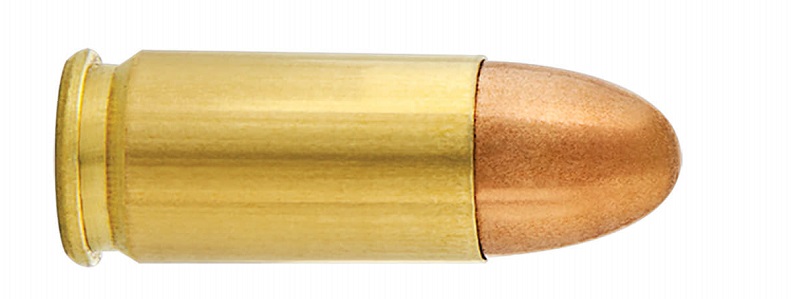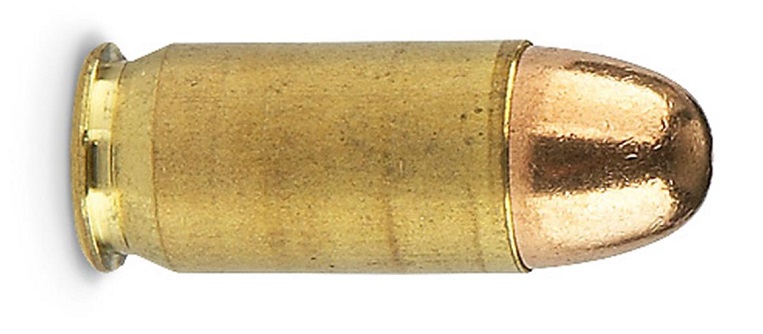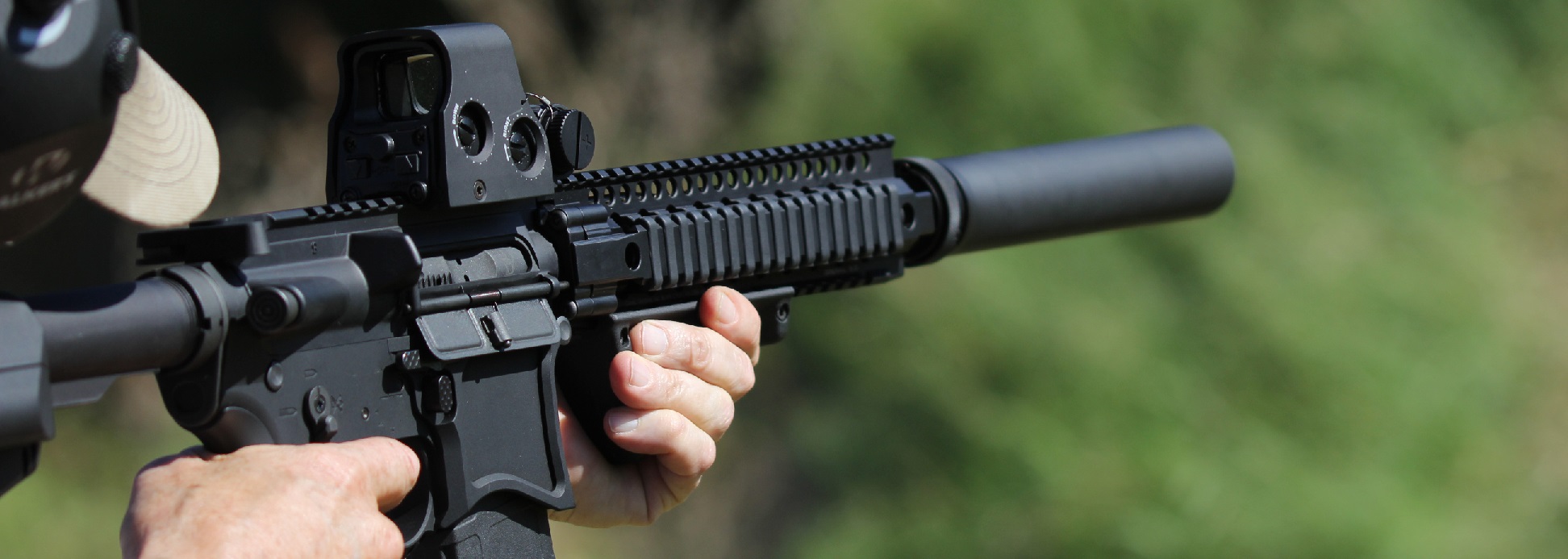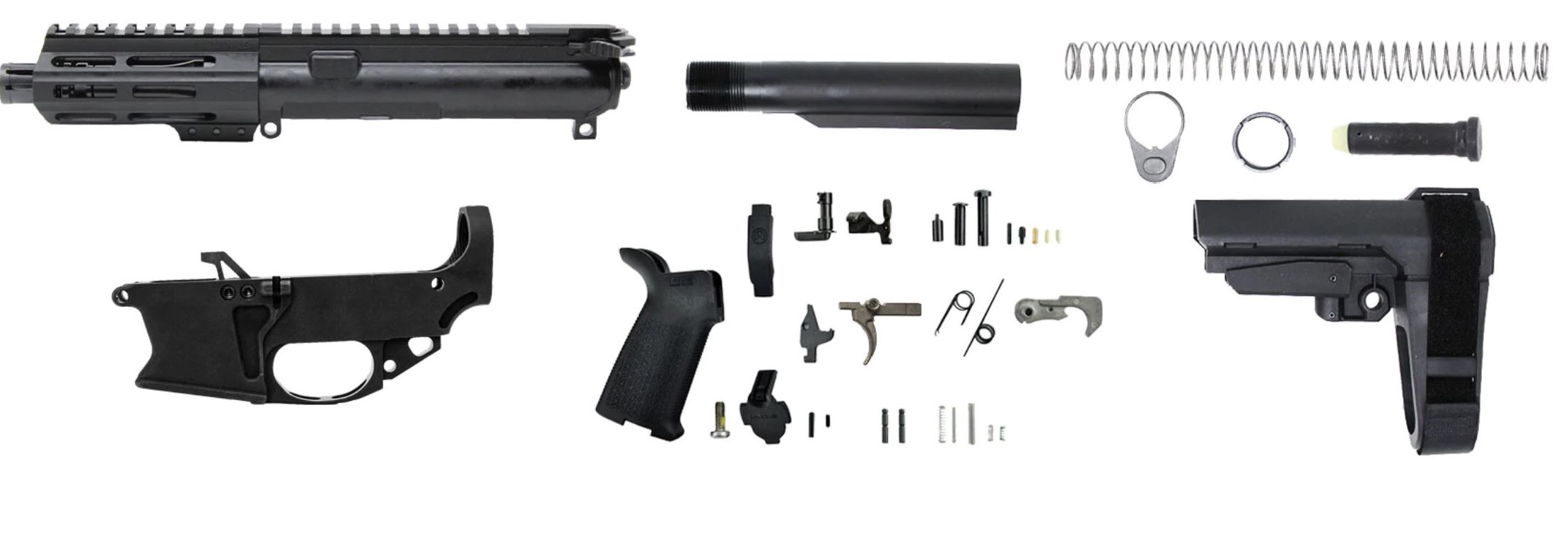Pistol-Cal Carbines: The AR-45 vs AR9
Posted by Gun Builders Depot on Oct 21st 2021
The AR platform's becoming a popular choice for pistol-caliber carbine owners. It easily converts from its usual centerfire rifle cartridge setup to blowback operation by just ditching the gas system. It can also improve velocity and accuracy of 9mm and .45 ACP to such an extent that both rounds become accurate up to 150 to 200 yards.
But which round is better? Or specifically, which firearm's better? The AR9 or the AR-45? We're looking at how both loads perform in these platforms. We'll cover ballistics, barrel length and overall AR setup, and the pros and cons of both cartridges and firearms.
9mm and the AR platform

The 9mm has been growing in popularity amongst AR owners, largely thanks to the development of the dedicated AR9 variant. This variant effectively standardized the AR's adoption of pistol calibers. The AR9's typically configured as a pistol, given that the 9mm round maximizes its velocity in a short barrel.
Physical Specifications
- Bullet diameter: 0.355" (9.01 mm)
- Neck diameter: 0.380" (9.65 mm)
- Base diameter: 0.391" (9.93 mm)
- Rim diameter: 0.392" (9.96 mm)
- Rim thickness: 0.050" (1.27 mm)
- Case length: 0.754" (19.15 mm)
- Overall length: 1.169" (29.69 mm)
- Case capacity: 13.3 gr H2O
- Max Pressure (SAAMI): 35,000 PSI
- Grain weights: 90 grains to 185 grains
The newer AR-45

The .45 ACP has been the 9mm's competitor for decades, so it only makes sense that it found its way into the AR platform, too. Also often configured as a pistol, the new AR-45 standardized the parts required to build or convert an AR-15 chambered in .45 ACP. We'll touch on building these guns later.
Physical Specifications
- Bullet diameter: 0.452" (11.5 mm)
- Neck diameter: 0.473" (12.0 mm)
- Base diameter: 0.476" (12.1 mm)
- Rim diameter: 0.480" (12.2 mm)
- Rim thickness: 0.049" (1.2 mm)
- Case length: 0.898" (22.8 mm)
- Overall length: 1.275" (32.4 mm)
- Case capacity: 26.7 gr H2O
- Max Pressure (SAAMI): 21,000 PSI
- Grain weights: 78 grains to 250 grains
Caliber Specs Compared
At first glance, there's not much to say here. The 9mm and .45 calibers sport similar physical characteristics. In fact, the 9mm is only about a tenth of an inch "thinner" than .45, and both rounds can fire the same grain weights. The greatest differences between these two cartridges is found in their magazine capacity, and overall velocity and power. Let's look at ballistics and then review the required build specs for both AR variants.
.45 vs 9mm Ballistics
We can't collect data for every 9mm and .45 load, since there are dozens on the market for both. But we can cover the most common grain weights, which paints the most accurate picture when it comes to obtaining real-world performance. We're including +P ammunition in these comparisons, since the AR platform is capable of handling these hot loads with ease.
Barrel length can greatly affect velocity and energy. To keep the comparisons honest, we're using ballistic data reported by all loads' advertised optimal speeds and muzzle energy.
Muzzle Velocity
9mm
- 115-gr Federal FMJ: 1,180 FPS
- 124-gr Federal FMJ: 1,150 FPS
- 124-gr Underwood FMJ +P: 1,225 FPS
- 115-gr Winchester JHP +P: 1,335 FPS
- 124-gr Cor-Bon JPH +P: 1,250 FPS
.45 APC
- 230-gr Winchester FMJ: 835 FPS
- 230-gr Double Tap FMJ: 960 FPS
- 165-gr Hydra-Shock: 1,060 FPS
- 185-gr Underwood JHP: 1,100 FPS
- 145-gr Glaser Cor-Bon +P: 1,350 FPS
Muzzle Energy
9mm
- 115-gr Federal FMJ: 335 ft-lbs.
- 124-gr Federal FMJ: 364 ft-lbs.
- 124-gr Underwood FMJ +P: 413 ft-lbs.
- 115-gr Winchester JHP +P: 455 ft-lbs.
- 124-gr Cor-Bon JPH +P: 434 ft lbs.
.45 APC
- 230-gr Winchester FMJ: 356 ft-lbs.
- 230-gr Double Tap FMJ: 471 ft-lbs.
- 165-gr Hydra-Shock: 412 ft-lbs.
- 185-gr Underwood JHP: 497 ft-lbs.
- 145-gr Glaser Cor-Bon +P: 587 ft-lbs.
So, which round is better?
That's a tough question to answer, especially when it comes to building a pistol-caliber carbine like the AR9 and AR-45. To answer this, we need to closely compare energy and velocity, barrel length, accuracy, and other performance metrics -- all within the context of carbines, not handguns.
Let's begin.
Velocity and Energy Compared
On average, 9mm exits the muzzle at around 1,230 feet per second, which is 16% faster than .45 ACP's average muzzle velocity of 1,060 FPS. Inversely, .45 ACP provides approximately 16% more muzzle energy: That's 465 lb. ft. compared to 9mm's 400 lb. ft.
So, 9mm's faster and .45 hits harder. But this only tells half the story. If you want this kind of performance from either cartridge, the barrel you chamber these rounds in matters just as much.
.45 vs 9mm: Barrel Length

Thankfully, extensive testing has been done specifically to figure out what barrel length is best for building an AR-45 that can obtain maximum velocity. International Sportsman collected the data. In short, a 15" barrel is required to obtain maximum velocity. However, reducing length all the way down to just 7" still yields around 94% of max velocity, and a 9" barrel provides 97% of max velocity with almost identical ballistic performance downrange.
So, for the AR-45, a 7" to 9" barrel is the sweet spot for obtaining accuracy in a light, small platform.
The story isn't much different when it comes to 9mm. We compiled ballistic data thanks to Ballistics By The Inch and found that, generall, 9" is also the best barrel length when it comes to the AR9. For most loads, increasing barrel length beyond this point only provides tiny increases in velocity -- around 1% or less.
.45 vs 9mm: Carbine Accuracy
The longer barrel length provided by the AR platform means the AR9 and AR-45 can out-shoot handguns chambered in the same rounds. Old comparisons about effective range and accuracy -- which use data largely gathered from handguns like the GLOCK and 1911 -- also go out the window.
We can use the advertised velocities up above to estimate accuracy of 9mm and .45 ACP in a pistol-caliber carbine by looking at bullet drop. When fired from a 7" to 9" barrel, the average 124-grain 9mm will drop by around 9" to 10" at 100 yards, while the average 230-grain .45 will drop around 12" to 13" at 100 yards. At 150 yards, the typical .45 drops by around 30" to 35", while the typical 9mm will drop by around 26" to 30".
So, for either round, you can expect high accuracy out to approximately 150 to 175 yards, and moderate accuracy at 200 to 225 yards.
Shooting Subsonics Suppressed

Pistol-caliber carbines are excellent candidates for providing high subsonic suppressed performance. After all, 9mm and .45 ACP both suppress very easily and still provide great accuracy and stopping power at subsonic speeds within 100 yards.
But how does that extra barrel length on your AR9 or AR-45 affect the ability to remain subsonic with popular loads? Put simply, most 9mm loads that normally travel at subsonic velocities -- below 1,100 FPS -- will obtain supersonic velocity in a 7" to 9" barrel. In fact, you need to shorten your barrel down to around 4" to 5" to reliably shoot subsonics below this velocity. We cover that more in our 300 BLK vs 9mm Guide.
If you want to shoot subsonic loads in your pistol-caliber carbine, you'll need to build a very short AR9, or stick with the AR-45 since many of its heavy loads can still travel at subsonic velocities in a 7" to 9" barrel.
Hollow-Point Performance
Mass, speed, and surface area are the three things that determine how deadly a bullet is. Suffice it to say that both 9mm and .45 ACP's hollow-point loads have been just about perfected when it comes to deadliness. If you're in the market for a pistol carbine for personal defense, you'll be happy to learn the added muzzle velocity only adds to this effectiveness.
The typical 9mm hollow-point expands to around 0.72", while the typical .45 expands to about 0.79". Does this .07" make any difference in overall lethality? Practically speaking, no.
Magazine capacity
The 9mm once enjoyed much higher magazine capacity than .45 because it could easily be double-stacked. Most .45-chambered handguns have stuck with single-stack magazines since a double-stacked .45 can, in some cases, make the hand grip too large and bulky.
That's not a problem for the AR-45. You'll find plenty of double-stacked .45 magazines for use in your pistol-caliber carbine. The 9mm still enjoys more capacity in a slightly shorter magazine and the added convenience of using GLOCK magazines. But meaningful differences in capacity between the AR9 and AR-45 are nonexistent.
Felt recoil
Yet another advantage enjoyed by the 9mm gets mitigated when chambered in a carbine. Pistol-caliber ARs use large bolts, carriers, recoil springs, and buffers. These high-mass moving assemblies dramatically reduce the felt recoil of .45 and 9mm, making the argument concerning felt recoil between the two calibers also largely meaningless.
Cost per Round
The 9mm still enjoys a distinct advantage when it comes to how expensive a day at the range can be. Current pistol ammo prices are high, but 9mm is around 25% to 30% cheaper, averaging $0.31 to $0.35 per round compared to the typical .45's $0.44 to $0.52 cost per round.
Parts and build costs
The AR9 is way more popular than the AR-45, simply because it was adopted by the greater black rifle community years ago. That means the overall cost of building a 9mm AR -- and the availability of parts to customize your build -- is more attractive.
Summary: Building an AR9 or AR-45

In the end, is one pistol-caliber variant of the AR universally better than the other? No. The shooting world has finally admitted 9mm and .45 are highly similar, and so too are these cartridges' AR platforms. The differences that'll make you decide which one you want to build (or buy) are found in three factors:
Whether you want to shoot supersonic or subsonic loads, whether you prefer slightly more accuracy beyond 150 yards, or slightly more power beyond this same distance, and how much you want to spend. Want plenty of stopping power up close that can be suppressed? Build an AR-45.Want supersonic performance at long range that comes cheap? Build an AR9. If that's your choice, we have AR9 pistol kits like this 10.5" kit available.
DISCLAIMER: If you are new to the world of DIY gun building, you likely have a lot of questions and rightfully so. It’s an area that has a lot of questions that, without the correct answers, could have some serious implications. At GunBuilders.com, we are by no means providing this content on our website to serve as legal advice or legal counsel. We encourage each and every builder to perform their own research around their respective State laws as well as educating themselves on the Federal laws. When performing your own research, please be sure that you are getting your information from a reliable source.

